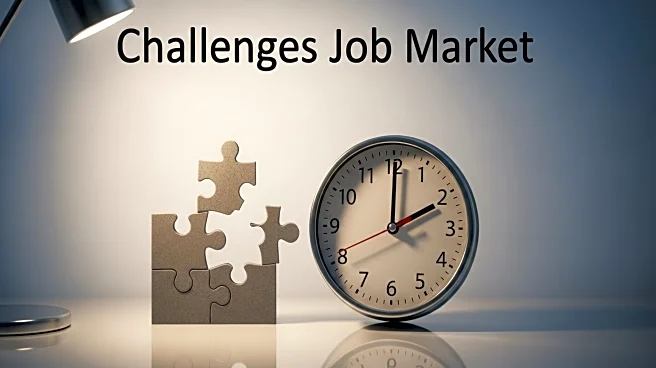What's Happening?
The U.S. job market is experiencing significant challenges despite strong corporate profits and a low unemployment rate of 4.3 percent. Payrolls have been stagnant for the past four months, with hiring rates at their lowest since the post-Great Recession recovery. Job seekers, like Harris, a recent UC Davis graduate, face difficulties securing employment despite having strong resumes and willingness to relocate. The use of AI in hiring processes has increased, making it easier to find job openings but harder to secure positions. Many applicants find themselves sending numerous applications without receiving responses, leading to frustration and prolonged job searches.
Why It's Important?
The current state of the job market has broad implications for the U.S. economy and workforce. The stagnation in hiring rates, despite strong corporate profits, suggests underlying issues in the labor market that could affect economic growth. The reliance on AI for hiring processes may streamline operations but also creates barriers for job seekers, potentially leading to increased unemployment and underemployment. The challenges faced by new graduates and experienced workers alike highlight the need for policy interventions to address hiring practices and support job creation. The situation could impact consumer spending and economic stability if not addressed.
What's Next?
The job market may face further disruptions if hiring rates do not improve. Workers are encouraged to engage in traditional networking and seek opportunities through personal connections. Employers may need to reassess their hiring practices to ensure they are effectively utilizing AI without excluding qualified candidates. The potential for a recession looms if the equilibrium between hiring and firing continues to deteriorate. Policymakers may need to consider measures to stimulate job growth and support workers in transitioning to new roles.











